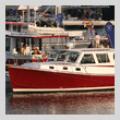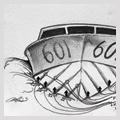What’s New on the Waterfront? The 48-Volt Boat
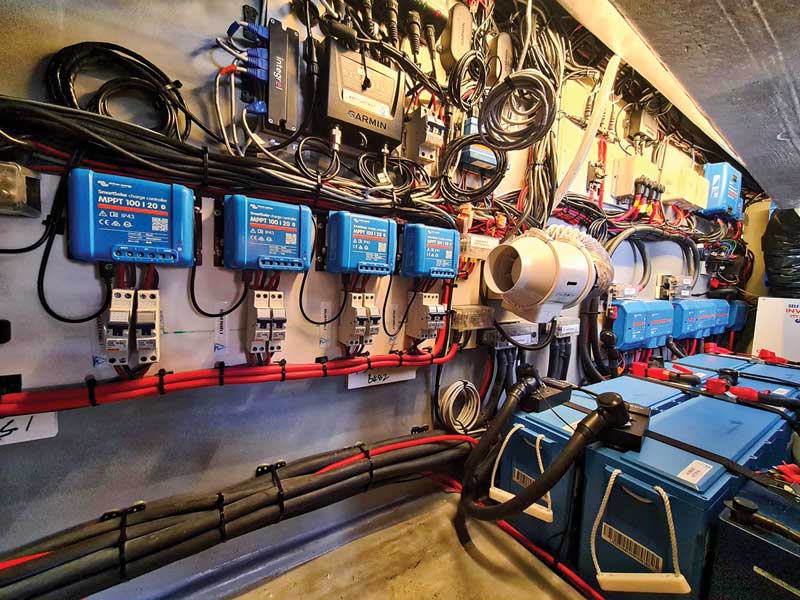 The increased power density of lithium-ion batteries plus the improved efficiencies of inverters and DC-to-DC converters has encouraged boatbuilders like Balance Catamarans to design power systems at 48 volts and supply high-load appliances without any onboard genset.Photo courtesy Balance Catamarans
The increased power density of lithium-ion batteries plus the improved efficiencies of inverters and DC-to-DC converters has encouraged boatbuilders like Balance Catamarans to design power systems at 48 volts and supply high-load appliances without any onboard genset.Photo courtesy Balance Catamarans
Fleeting fads rise and fall across the generations of boats, while other yacht-design trends only seem to grow. Two recent enduring trends meet in an almost perfect paradox: the aim to reduce fossil-fuel emissions, and the inexorable increase of power-hungry appliances aboard our homes on the water. To crack that nut, today’s marine engineers are designing power systems adapted to those big loads—air conditioners, microwave ovens, induction stoves, water heaters, booming flat-screen home entertainment centers, and powerful windlasses and thrusters—while altogether avoiding an onboard generator, known commonly as a genset.
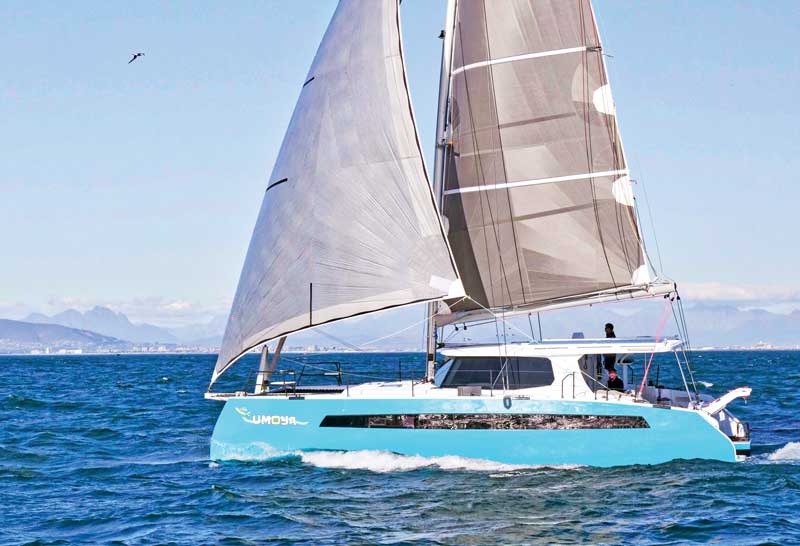 Built in South Africa, the Balance 442 (below) relies on a 48-volt electrical system. Photo courtesy Balance Catamarans
Built in South Africa, the Balance 442 (below) relies on a 48-volt electrical system. Photo courtesy Balance Catamarans
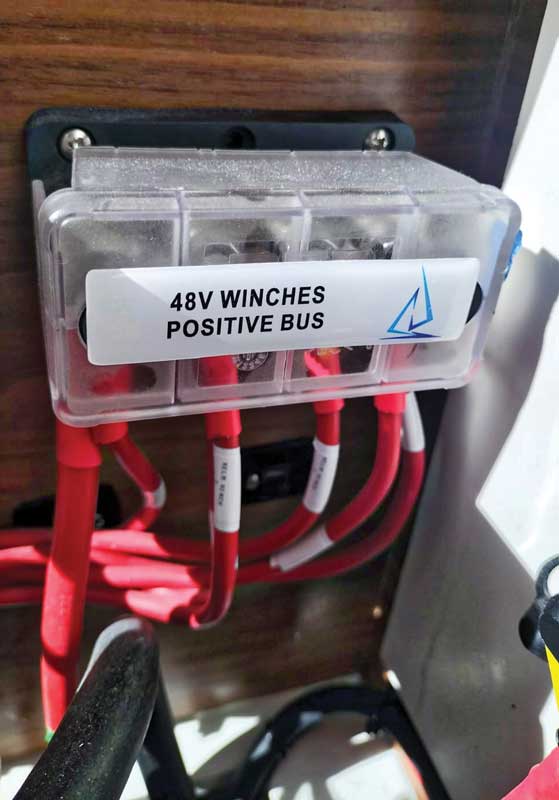 One benefit for such power is being able to power 48-volt winches using relatively small wires. Photo courtesy Balance Catamarans
One benefit for such power is being able to power 48-volt winches using relatively small wires. Photo courtesy Balance Catamarans
A growing trend in new boats is to replace the old familiar 12-volt battery bank with a 48-volt bank. Why 48 volts? Well the simple answer is that with the higher voltage, wires can be smaller, saving cost and weight, reducing heat, and boosting efficiency.
To get more technical, the answer is implied in part by the power equation, which tells us that power equals electrical potential multiplied by electrical current: Watts = Volts X Amps. For our purposes, flipping the equation begins to make the case: Amps = Watts / Volts. Voltage and amperage have an inverse relationship: as one goes up, the other goes down proportionally. Higher voltage means lower amperage to deliver the same power. And because the size of conductors is based on amperage, that means smaller wires between the battery and the device being powered.
Safety sets the upper voltage limit. While alternating-current (AC) electrical systems present a lethal risk of electrocution, the American Boat & Yacht Council (ABYC) deems direct current (DC) systems below 50 volts safe for humans to work with. At 48 volts DC you’ll surely feel the zap if your sweaty arm shorts a circuit on a hot day, but it won’t kill you.
To illustrate the 48-volt argument, let’s consider a 1,200-watt windlass installed 20 feet from the battery. In a 12-volt system, that windlass draws 100 amps. With a 48-volt system, the same 1,200-watt windlass draws only 25 amps. ABYC recognizes that the inherent resistance in every conductor induces a predictable voltage drop over a given distance to and from the battery; hence, it specifies wire gauges—or size—based on the length of the wire run and the load’s amperage draw.
For our windlass installation on a 12-volt boat, that calculation prescribes 40 feet of 2/0 AWG wire (a fairly thick cable), at a cost of $360 and a weight of almost 20 pounds. (Multiply that cost and weight by every circuit on the boat.) By contrast, the same windlass in a 48-volt boat would need only 10 AWG wire (relatively thin), at a cost of $35 and just a pound and a half of weight. Ben Stein at panbo.com calculates the cost savings for wire in this scenario at roughly $9 per foot. Smaller fuses, breakers, and bus bars also reduce the cost.
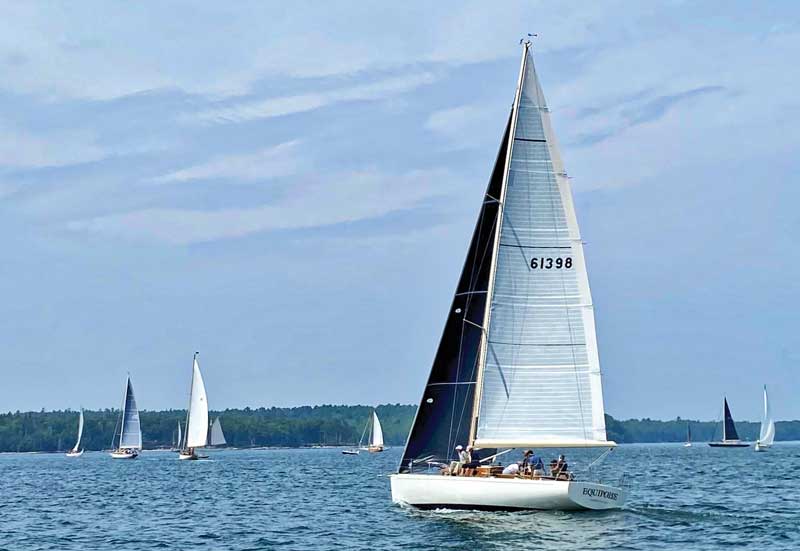 Designed by Jim Taylor and built by Brooklin Boat Yard, Equipoise is a 44-foot daysailer with 48-volt electric propulsion. Photo courtesy Brooklin BoatYard
Designed by Jim Taylor and built by Brooklin Boat Yard, Equipoise is a 44-foot daysailer with 48-volt electric propulsion. Photo courtesy Brooklin BoatYard
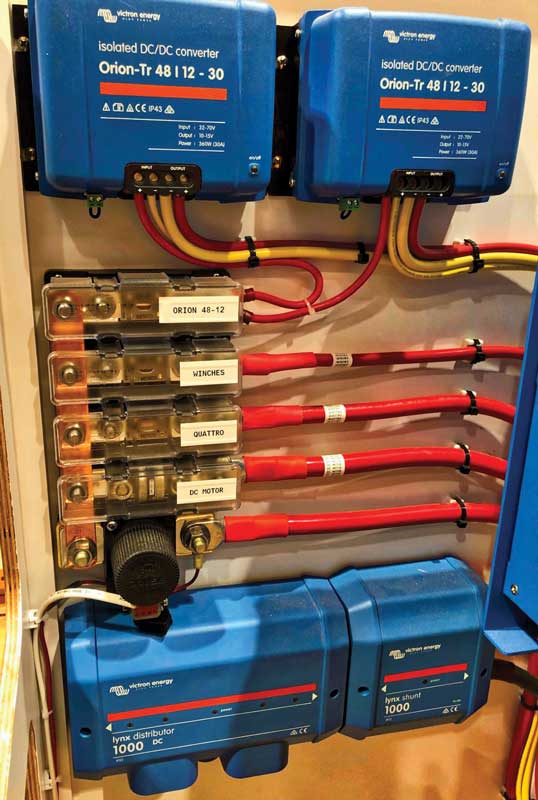 Equipoise relies on Victron DC-to-DC invertors to power 12-volt equipment. Photo courtesy Brooklin Boat Yard
Of course, wires are just one component of a whole system that includes power storage, electrical appliances, and the devices that charge and convert our stored power.
Equipoise relies on Victron DC-to-DC invertors to power 12-volt equipment. Photo courtesy Brooklin Boat Yard
Of course, wires are just one component of a whole system that includes power storage, electrical appliances, and the devices that charge and convert our stored power.
“As the industry progresses with electrification, we get a lot of requests for elimination of conventional generators,” said Menno Ligterink at a recent ABYC seminar called “Staying Current with Electrification.” A member of ABYC’s technical board, he speaks from 25 years of experience in power conversion and storage in the marine industry.
“People hated the fumes, the vibration, the noise of gensets. There were carbon monoxide concerns,” says Ligterink. “Meanwhile, inverters were getting bigger and more powerful, all with a clear sine wave. In the past we used to run only a microwave or a TV off the inverter. But now people can run their complete system off of it.”
An inverter changes the battery’s direct current to the alternating current (AC) that supplies big-draw appliances. Inverters are subject to the same power equation: at 12 volts, a 3,000-watt (3-kW) inverter draws almost 250 amps; a 6-kW inverter draws almost 500 amps. That’s a lot of current drawn off your typical boat’s battery bank.
“Anything over 6 kW, you’re really pushing that envelope to 800, 900, even 1,000 amps,” said Ligterink. “Most 12-volt systems cap off a boat’s capacity at 10 kilowatts. But with a 48-volt DC system, you could increase that capacity to 35 kW or even 50 kW.”
The limited amp-carrying capacity of available wire gauges places another ceiling on 12-volt systems. For instance, a 4/0 conductor (a very thick wire) can carry no more than 445 amps, which poses challenges when supplying loads beyond 5 kW.
There’s another advantage to the higher-voltage system. “The efficiency of equipment is going to be better because you’re running a lower current,” Ligterink said. “In inverted charges, the difference between 12 and 48 volts is about 3 percent more efficient. That may not sound like a lot, but if you calculate that over 24 hours, that saves you a lot of amp-hours over time.”
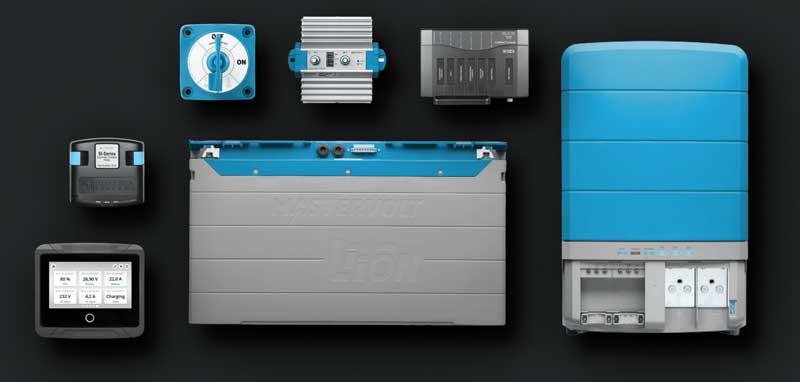 Navico’s Fathom systemwide e-Power line of products includes elements such as lithium batteries, alternator controllers, inverters and the like. Note: All renderings/pictures shown are for illustration purpose only. Photo courtesy Navico/Fathom
Navico’s Fathom systemwide e-Power line of products includes elements such as lithium batteries, alternator controllers, inverters and the like. Note: All renderings/pictures shown are for illustration purpose only. Photo courtesy Navico/Fathom
A 48-volt system brings charging advantages, as well. “If you look at a 100-amp alternator,” said Ligterink, “you get about 1.2 kW out of it with a 12-volt system. But at 48 volts you can get almost 5 kW from the same footprint.”
Integrel Solutions has won several high-profile innovation awards for its 48-volt charging systems since 2018, and has since delivered alternators to a wide range of boatbuilders, including Balance Catamarans, Bali, Fountaine Pajot, Jeanneau, Lagoon, Leopard, and NEEL. Balmar and others have introduced 48-volt alternators too.
Technical improvements in energy storage—particularly with lithium-ion batteries—make it possible to put these charging advantages to practical use. Just a decade ago, lithium-ion batteries were an emerging technology, with dramatic well-publicized safety hazards, including grounded Boeing Dreamliner airplanes and fires (including on boats) that couldn’t be extinguished. But it’s important to note that under the “lithium-ion” umbrella, there are roughly a half dozen chemistries in commercial use, and safe practices have been established for boats, practices that have now become actual ABYC standards used in boat construction and repairs.
At press time, ABYC knows of no fires or other catastrophic failures from systems using lithium-iron-phosphate (LiFePo4) batteries installed according to ABYC standards. Meanwhile, the arguments in favor of lithium-ion for energy storage are compelling for two crucial reasons: they can be discharged much more deeply than traditional lead-acid batteries, providing more usable capacity between charge cycles; and they can accept the charge from high-output alternators much more quickly than lead-acid batteries can. That means significantly less engine-running time to charge the battery bank.
Some companies are now introducing 48-volt lithium-ion batteries into the marine market; alternatively, four 12-volt batteries wired in series creates a 48-volt bank.
 Besides their abilty to withstand deep discharges and recharge quickly, lithium batteries fit in tight spaces. Photo courtesy Balance Catamarans
Besides their abilty to withstand deep discharges and recharge quickly, lithium batteries fit in tight spaces. Photo courtesy Balance Catamarans
The final piece of the puzzle in the transition from 12-volt systems to 48-volt systems comes down to the onboard electrical devices themselves. Decades of practice have created an established market of products designed and built to run at 12 volts. But that’s changing. In 2022 Mercury introduced a V-10 outboard motor with built-in 48-volt and 12-volt alternators. Meanwhile, the Navico Group recently introduced its Fathom e-power system, integrating all the components of a 48-volt system from chargers to inverters to DC-to-DC converters supplying 12 volts where necessary (nav lights or VHF radios, for example, that aren’t available in 48 volts).
Kenyon introduced a 48-volt grill last year. Dometic is developing 48-volt air-conditioners. Vetus has introduced 48-volt thrusters and windlasses. New highly efficient air-conditioners with variable-speed compressors dramatically reduce the start-up loads, making them viable without a genset. Victron, Mastervolt, Newmar and others continually introduce DC-to-AC inverters and DC-to-DC converters that ever more efficiently step voltage up or down accordingly: for example, to charge a 12-volt lead-acid start battery from a 48-volt lithium-ion bank.
For new-boat buyers, the caveat in all of this is that 48-volt systems are an emerging technology. The pool of technicians who understand it may be shallower than that of those who could reliably service a more traditional 12-volt system.
But as marine designers draw more power from electrical sources and less from fossil fuel, you can bet we’ll see more 48-volt boats coming down the ways.
■
Tim Murphy develops marine-trades curriculum for the American Boat & Yacht Council. He is a longtime marine journalist, and he sails his 12-volt 1988 Passport 40 Billy Pilgrim from the Maine Yacht Center in Portland.
More online about 48-volt electrical systems
■ “Staying Current with Electrification” webinar
■ “Is Now the Time for a Move to 48-volt DC Systems?” Panbo blog












